I absolutely love to teach with games. Playing a game transitions a lesson concept from tedious drill to fun and… well, games. My kids might have balked at the idea of doing yet another set of math problems, but they would voluntarily play board games using money, which required the same adding and subtracting as the math problems — only they could do the money problems aloud or in their heads while handling all those tactile game parts, instead of writing them on paper. The ability to do math in your head is a distinct advantage in life, so I encouraged my kids to play money games as often as possible, but they didn’t need much encouragement at all. They loved to play board games of all types, and games with money were a distinct favorite.
I also believe in borrowing equipment from games and combining those components to create a new game or a new variation of an old game. This is how we got here today, coming up with a new variation of an old game (Candy Land) that often falls into disuse once its players begin to read and move on to more complex games. By adding the math component of money, the Candy Land game once again appeals to older students, and with several variations that increase the complexity of the money transactions, this game can help students of all ages hone their mental math skills in a very stealthy way. Every turn provides all players with opportunities to improve their math skills, whether to avoid paying fines or to catch another player in a mistake and collect a fine from him. Winning the game is highly dependent on chance, giving all players an equal playing field. (Notice that the fines are not intended as meanness, they are simply incentive to pay attention during other players’ turns and to make players aware that they are doing their own math correctly. The fines also provide another way for an alert player to make money. The fines are intended as a sporting challenge, not a way to make fun of other players. Fines may also be optional — see Fines section below.)
Instructions:
Basic Version #1 — Use the game board, cards, and pawns from a regular Candy Land game, but include the money from Monopoly, Monopoly Junior, or any other source. Begin a money “pot,” by placing $5 (in any combination of bills) on the Home Sweet Home area of the Candy Land game board, and give each player a total of $50 in bills of various denominations. Players do not all need to have the exact same denominations of bills, as long as they all start with the same total. (Suggested amounts for each player — standard denominations: 10 $1’s, 4 $5’s, 2 $10’s; Monopoly Junior denominations: 6 $1’s, 5 $2’s, 4 $3’s, 3 $4’s, 2 $5’s) Any leftover bills should be set aside and not used.
Assign the following number values to the Candy Land color cards, based on the colors of the Candy Land game board:
- Purple square = $1
- Blue square = $2
- Green square = $3
- Yellow square = $4
- Orange square = $5
- Red square = $6
Place the shuffled stack of cards face-down near the starting square. Play begins with the oldest player and proceeds to his left. Each player in turn draws a Candy Land card and moves his pawn to the nearest square of that color as in a normal game, but when his pawn lands on the square, he must pay the corresponding amount listed above into the Home Sweet Home pot. (The Rainbow Trail and Mountain Pass shortcuts have no significance in this game and are not used.)
Special Plays:
Doubles card — Player moves to the appropriate square and collects an amount of money from the pot that is equal to double the dollar value of his color square (Example: a double-red card = $12). The player may then take a bonus turn.
Sweet Treat card — Player moves to the appropriate square, collects all the money in the pot, and takes a bonus turn.
There is no limit to how many Doubles and/or Sweet Treat cards may be drawn in succession by a single player, as long as the pot contains sufficient funds. However, if the pot does not contain enough money when a player draws a card that would allow him to collect more, that player collects all the money available in the pot, his turn ends, and play moves to the next player. If there is no money in the pot, the player’s turn ends, and he does not move his pawn.
Sticky Spot –– A player whose pawn lands on a Sticky Spot must pay double the amount for its color, but may move on his next turn (he is not required to remain on that square until the appropriate color card is drawn). No bonus turn is awarded. In the rare event that a player draws a Doubles card that lands him on a Sticky Spot, no money is either paid or collected, and the player’s turn ends.
Fines — If a player either pays or collects an incorrect amount of money, or pays when he should be collecting, or collects when he should be paying, any other player who notices this mistake may point it out at the end of the player’s turn, before the next player has drawn his card. In the case of a player who has earned a bonus turn, the mistake must be pointed out before the next card is drawn. In each case, the player who made the mistake must correct the amount AND pay a $5 fine to the player who pointed it out. If a player catches himself in a mistake and corrects it before the next card is drawn, no fine is required. (Fines may be considered optional, especially when young players are just beginning to learn math facts. The fines can also be imposed by much younger players against more experienced players, and not vice versa, depending on the skill levels involved.)
Players who need to do so may make change from the pot in order to obtain the correct amount required for their turn. (Example: A player owing $8 to the pot may pay with a $10 bill and remove $2.) A player may also trade a large bill to another player in exchange for an equivalent amount of smaller bills, if the pot does not contain a sufficient amount for exchange.
If a player’s pawn lands on an occupied space, the other player’s pawn is moved backwards to the nearest empty space. The owner of the moved pawn does not pay or collect any money because his pawn was moved.
If the stack of cards runs out before the game has been won, the stack should be shuffled well and turned over to start again.
A PLAYER’S TURN ENDS WHEN —
1) he has drawn a card, moved his pawn to the appropriate square, and paid the correct amount into the pot, OR
2) he has met condition #1 as a bonus turn, following a Doubles card or Sweet Treat card, OR
3) he has collected less than what was owed to him from the pot, because it didn’t contain enough money, OR
4) he pays all of his remaining money into the pot. Any player who runs out of money during the game is out for the remainder of the game.
THE GAME ENDS WHEN —
1) one player ends up with all the money, OR
2) the game is down to the final 2 players and one is eliminated by running out of money, OR
3) one player reaches Home Sweet Home and collects any money remaining in the pot. Home Sweet Home is considered to be located anywhere after the final square of the trail (no exact count is needed). A player whose pawn lands on the final square is not considered to have reached Home Sweet Home until his next turn, provided he draws any color card and not a Sweet Treat card that would send him back to another location on the trail.
Winning — Winner is the player with the most money at the end of the game.
Basic Version #2 (Dice-Addition) — Include a regular, 6-sided game die. Players will add the number on the die to the card’s dollar value. The rest of the rules apply as above, with the only change being the amount of money paid or collected on each turn. Each player rolls the die in addition to drawing a card, and alters the dollar value of the card according to the die. If any bonus turns are awarded, the player draws a new card and rolls the die for each additional turn. The die is not rolled whenever a Sweet Treat card is turned up. The amount paid for a Sticky Spot is not affected by the die. In the case of rolling Doubles and collecting money from the pot, the number on the die is added to the doubled value of the color square (Example: double-red = $12 + 4 on the die, collect $16).
ADVANCED VERSIONS FOR PLAYERS WITH HIGHER MATH SKILLS
Advanced Version #1 — Play proceeds as in Basic Version #1, but players receive a starting total of $200 (Suggested amounts for each player: 10 $1’s, 4 $5’s, 3 $10’s, 2 $20’s, 2 $50’s). The starting pot is increased to $20, and Fines are also increased to $20 each. The dollar value of each square changes as follows:
- Purple square = $1
- Blue square = $4
- Green square = $8
- Yellow square = $12
- Orange square = $16
- Red square = $20
Advanced Version #2 (Dice/Addition) — Include a regular, 6-sided game die. Players will add the number on the die to the card’s dollar value. Play proceeds as Basic Version #2 (Dice-Addition), but increases the starting value of the cards to Advanced Version #1 levels before adding the number shown on the game die. Pencil and paper may be used for calculating correct values. Starting pot is increased to $100, and each player’s starting total of cash is increased to $500 (10 $1’s, 4 $5’s, 7 $10’s, 5 $20’s, 4 $50’s, and 1 $100’s). Fines are also increased to $100 each. If any bonus turns are awarded, the player draws a new card and rolls the die for each additional turn. The die is not rolled whenever a Sweet Treat card is turned up. The amount paid for a Sticky Spot is not affected by the die. In the case of rolling Doubles and collecting money from the pot, the number on the die is added to the doubled value of the color square (Example: double-red = $40 + 4 on the die, collect $44).
Advanced Version #3 (Dice/Multiplication) — Include a regular, 6-sided game die. Players will multiply the number on the die times the card’s dollar value. Play proceeds as Advanced Version #2 (Dice-Addition), with the only change being the amount of money paid or collected on each turn. Pencil and paper may be used for calculating correct values. Starting pot is $100, Fines are $100 each, and each player’s starting total of cash is $500. If any bonus turns are awarded, the player draws a new card and rolls the die for each additional turn. The die is not rolled whenever a Sweet Treat card is turned up. The amount paid for a Sticky Spot is not affected by the die. In the case of rolling Doubles and collecting money from the pot, the number on the die is multiplied times the doubled value of the color square (Example: double-red = $40 x 4 on the die, collect $160).
Advanced players may choose to play subsequent games, continuing with the cash accumulated from previous games (instead of re-counting to starting cash amounts). In this case, no cash is placed on Home Sweet Home as a starting pot. Each subsequent game is started by the next player to the left of the one who began the previous game. Very advanced players may choose to add more than one die to Advanced Versions #2 & 3.
© 2013 Carolyn Morrison. These rules may be printed for personal use or shared for free, but these game concepts and their rules may not be reproduced for sale. This copyright restriction must appear on any printed copies.
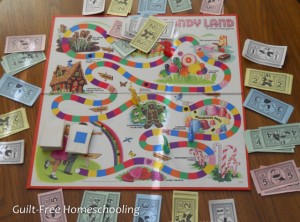
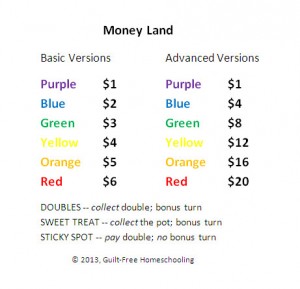
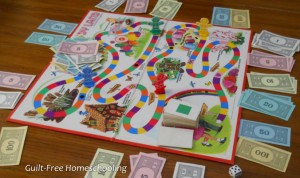
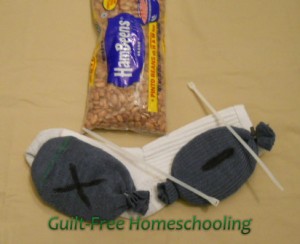
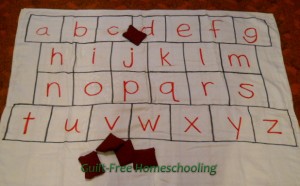
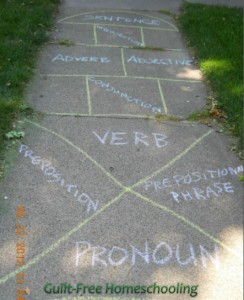

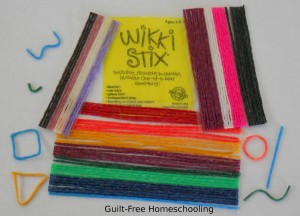

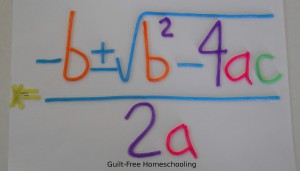
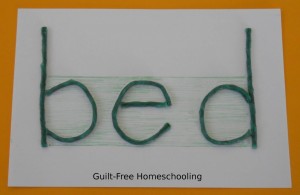
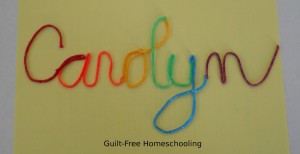
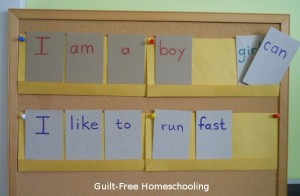
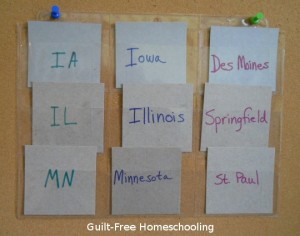




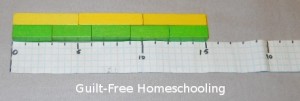
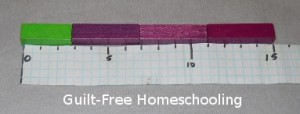




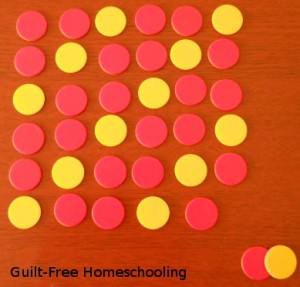
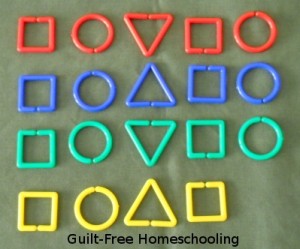


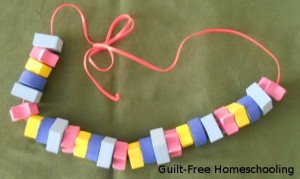
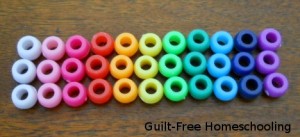


 Guilt-Free Homeschooling is the creation of Carolyn Morrison and her daughter, Jennifer Leonhard. After serious disappointments with public school, Carolyn spent the next 11 years homeschooling her two children, from elementary to high school graduation and college admission. Refusing to force new homeschooling families to re-invent the wheel, Carolyn and Jennifer now share their encouragement, support, tips, and tricks, filling their blog with "all the answers we were looking for as a new-to-homeschooling family" and making this website a valuable resource for parents, not just a daily journal. Guilt-Free Homeschooling -- Equipping Parents for Homeschooling Success!
Guilt-Free Homeschooling is the creation of Carolyn Morrison and her daughter, Jennifer Leonhard. After serious disappointments with public school, Carolyn spent the next 11 years homeschooling her two children, from elementary to high school graduation and college admission. Refusing to force new homeschooling families to re-invent the wheel, Carolyn and Jennifer now share their encouragement, support, tips, and tricks, filling their blog with "all the answers we were looking for as a new-to-homeschooling family" and making this website a valuable resource for parents, not just a daily journal. Guilt-Free Homeschooling -- Equipping Parents for Homeschooling Success!

Recent Comments